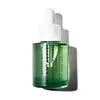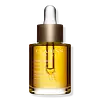What's inside
What's inside
 Key Ingredients
Key Ingredients

No key ingredients
 Benefits
Benefits

No benefits
 Concerns
Concerns

 Ingredients Side-by-side
Ingredients Side-by-side

Vitis Vinifera Seed Oil
EmollientPrunus Amygdalus Dulcis Oil
Skin ConditioningPersea Gratissima Oil
Skin ConditioningSqualane
EmollientShea Butter Ethyl Esters
EmollientSimmondsia Chinensis Seed Oil
EmollientCaprylic/Capric Triglyceride
MaskingAdansonia Digitata Seed Oil
EmollientBakuchiol
AntimicrobialRosa Canina Fruit Oil
EmollientTocopherol
AntioxidantCurcuma Longa Root Extract
MaskingCitrus Aurantium Amara Flower Oil
MaskingLinalool
PerfumingAlaria Esculenta Extract
Skin ProtectingLimonene
PerfumingGeraniol
PerfumingCitronellol
PerfumingFarnesol
PerfumingCitric Acid
BufferingVitis Vinifera Seed Oil, Prunus Amygdalus Dulcis Oil, Persea Gratissima Oil, Squalane, Shea Butter Ethyl Esters, Simmondsia Chinensis Seed Oil, Caprylic/Capric Triglyceride, Adansonia Digitata Seed Oil, Bakuchiol, Rosa Canina Fruit Oil, Tocopherol, Curcuma Longa Root Extract, Citrus Aurantium Amara Flower Oil, Linalool, Alaria Esculenta Extract, Limonene, Geraniol, Citronellol, Farnesol, Citric Acid
Ingredients Explained
These ingredients are found in both products.
Ingredients higher up in an ingredient list are typically present in a larger amount.
Farnesol is a compound extracted from essential oils such as lemongrass, rose, and more. It is used as a fragrance in products to help boost floral scents.
Farnesol is a known EU allergen and causes contact dermatitis.
This ingredient is hydrophobic, meaning it is not soluble in water.
Learn more about FarnesolGeraniol is used to add fragrance/parfum to a product. It is the main component of citronellol. It is a monoterpenoid and an alcohol.
Monoterpenes are naturally found in many parts of different plants.
Geraniol can be found in many essential oils including Rose Oil and Citronella Oil. The scent of Geraniol is often described as "rose-like". Many foods also contain Geraniol for fruit flavoring.
Geraniol can irritate the skin when exposed to air. However, irritation depends on the ability of geraniol to penetrate into the skin. In general, geraniol is not able to penetrate skin easily.
Geraniol is colorless and has low water-solubility. However, it is soluble in common organic solvents.
Like citronellol, it is a natural insect repellent.
2,6-Octadien-1-ol, 3,7-dimethyl-, (2E)-
Learn more about GeraniolLimonene is a fragrance that adds scent and taste to a formulation.
It's found in the peel oil of citrus fruits and other plants such as lavender and eucalyptus. The scent of limonene is generally described as "sweet citrus".
Limonene acts as an antioxidant, meaning it helps neutralize free radicals.
When exposed to air, oxidized limonene may sensitize the skin. Because of this, limonene is often avoided by people with sensitive skin.
The term 'fragrance' is not regulated in many countries. In many cases, it is up to the brand to define this term. For instance, many brands choose to label themselves as "fragrance-free" because they are not using synthetic fragrances. However, their products may still contain ingredients such as essential oils that are considered a fragrance.
Learn more about LimoneneLinalool is a fragrance and helps add scent to products. It's derived from common plants such as cinnamon, mint, citrus, and lavender.
Like Limonene, this ingredient oxidizes when exposed to air. Oxidized linalool can cause allergies and skin sensitivity.
This ingredient has a scent that is floral, spicy tropical, and citrus-like.
Learn more about Linalool